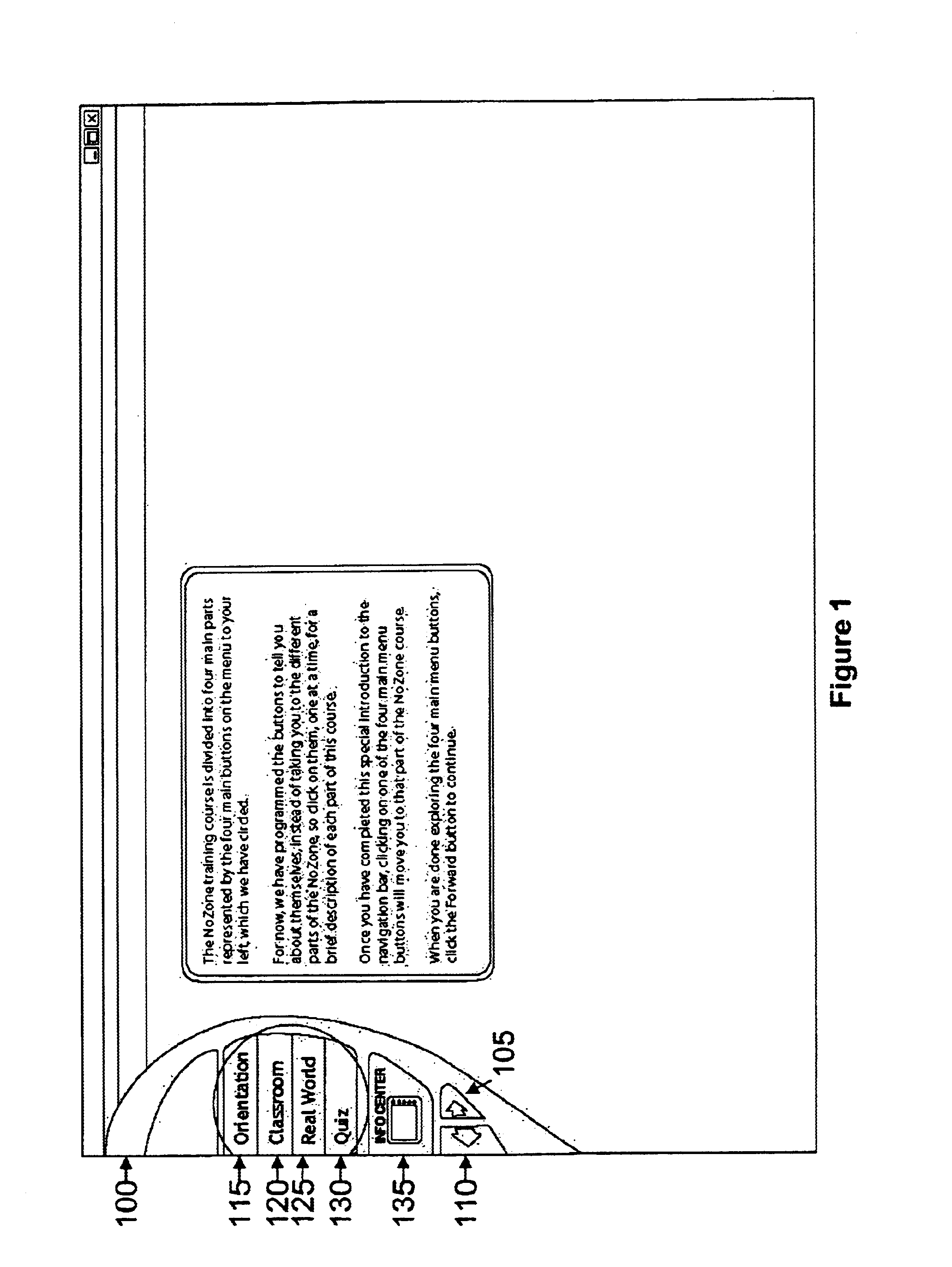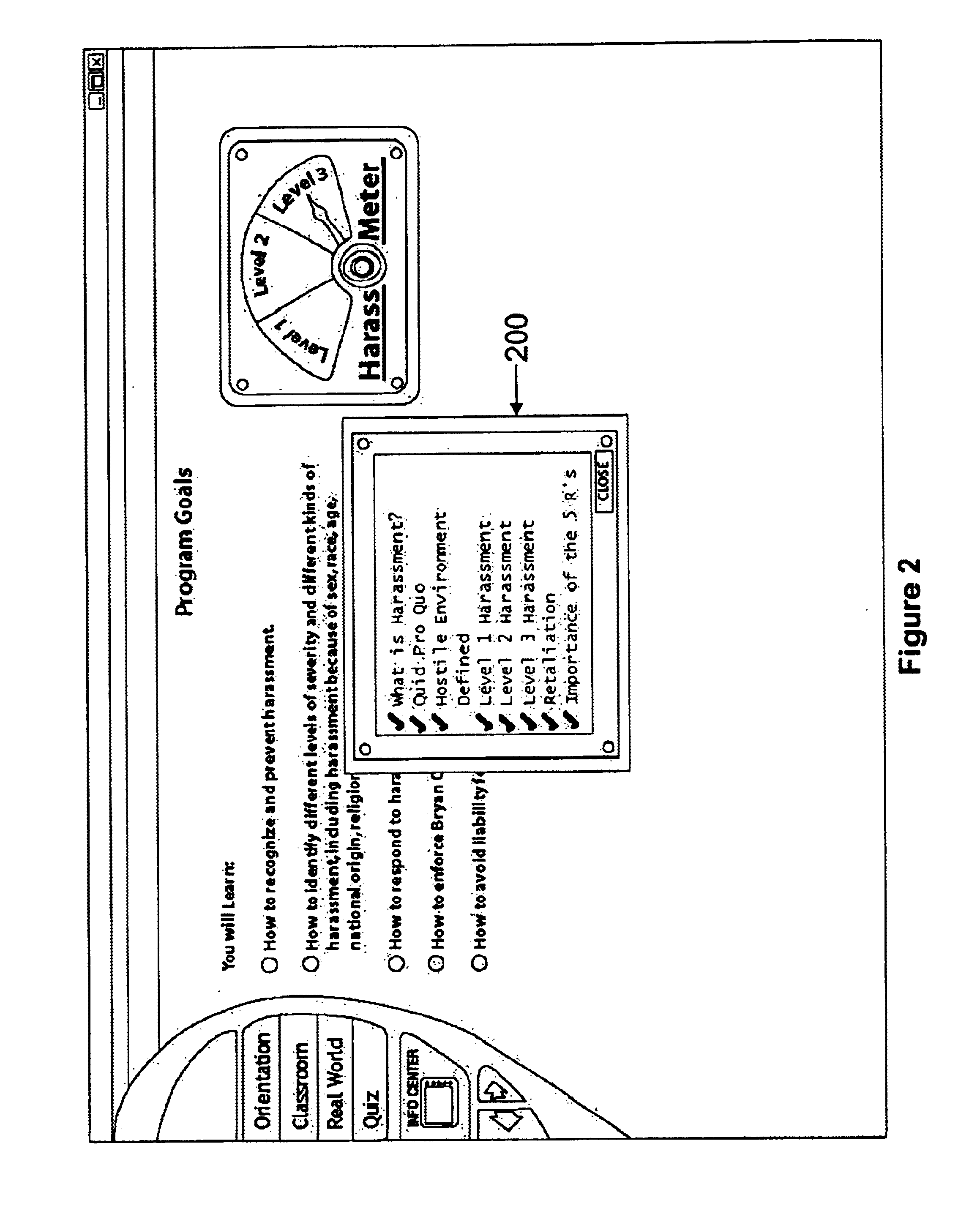Method for providing business conduct training
a business conduct and training technology, applied in the field of computer-implemented methods for providing business conduct training, can solve the problems of paper-based training materials and videotapes that are expensive to change, “static” training materials that quickly become out of date, and traditional training materials that are usually costly to customize to a particular company's needs
- Summary
- Abstract
- Description
- Claims
- Application Information
AI Technical Summary
Benefits of technology
Problems solved by technology
Method used
Image
Examples
Embodiment Construction
The present invention is directed to a computer-implemented method for providing business conduct training to a trainee. The method described herein can be utilized to provide training on any of a wide variety topics where the trainee is required to comply with policies and procedures or to behave in a certain manner. For example, in one embodiment described in detail herein, the method is used to provide harassment and discrimination training. To facilitate an understanding of the principals and features of the present invention, it is explained below with reference to its deployment and implementation in this illustrative embodiment. However, the method can be used to facilitate a wide variety of business conduct training, such as, any type of harassment, discrimination, human relations, ethics, insider trading, handling of confidential information, substance abuse, environmental compliance, safety, etc.
FIG. 1 illustrates an example of a user interface for an opening screen of a c...
PUM
 Login to View More
Login to View More Abstract
Description
Claims
Application Information
 Login to View More
Login to View More - R&D
- Intellectual Property
- Life Sciences
- Materials
- Tech Scout
- Unparalleled Data Quality
- Higher Quality Content
- 60% Fewer Hallucinations
Browse by: Latest US Patents, China's latest patents, Technical Efficacy Thesaurus, Application Domain, Technology Topic, Popular Technical Reports.
© 2025 PatSnap. All rights reserved.Legal|Privacy policy|Modern Slavery Act Transparency Statement|Sitemap|About US| Contact US: help@patsnap.com



